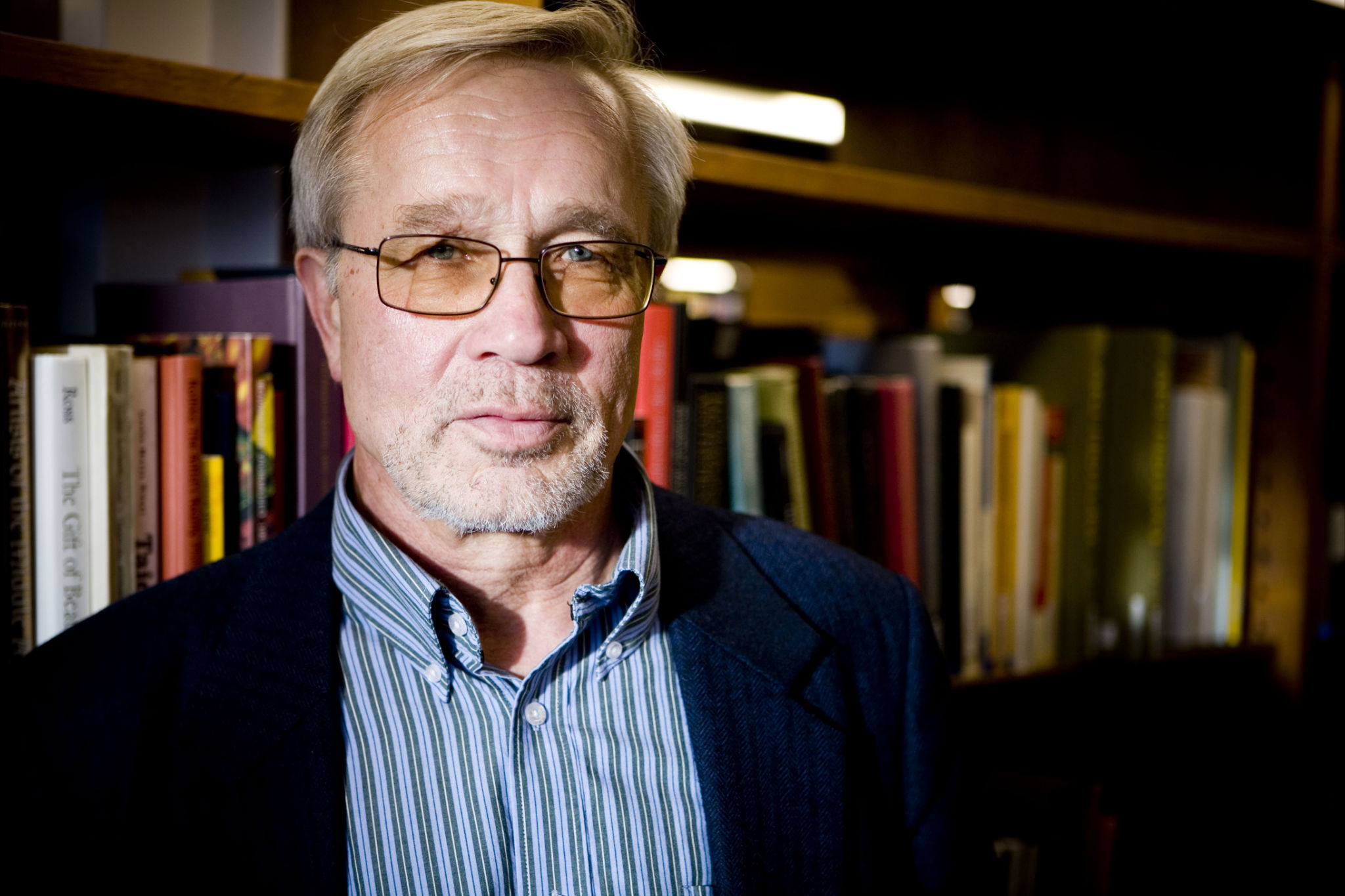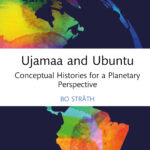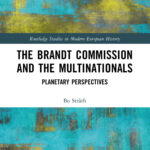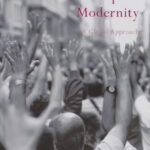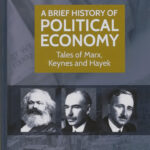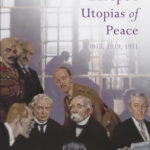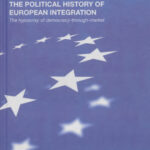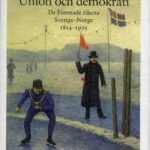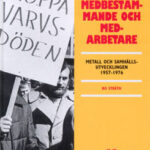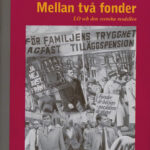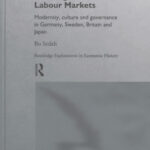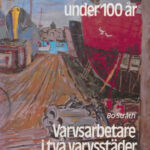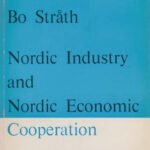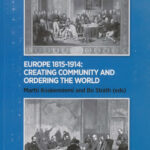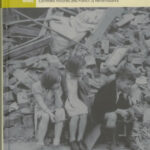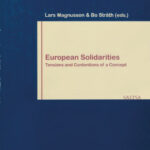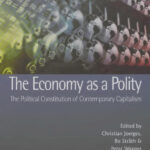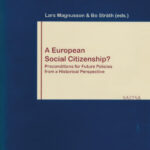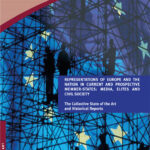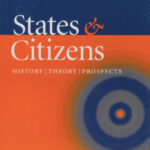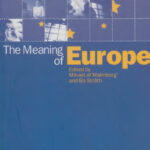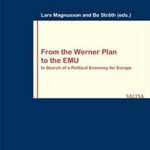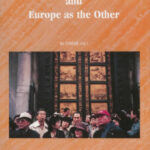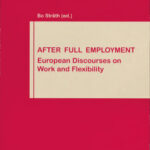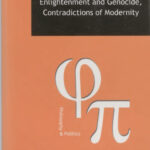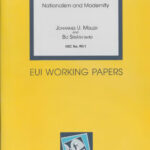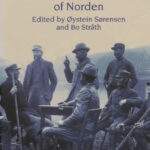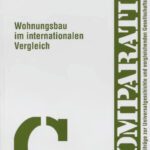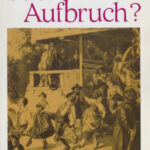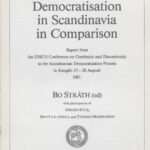Conceptualizing Capitalism: Conversations with Henning Trüper
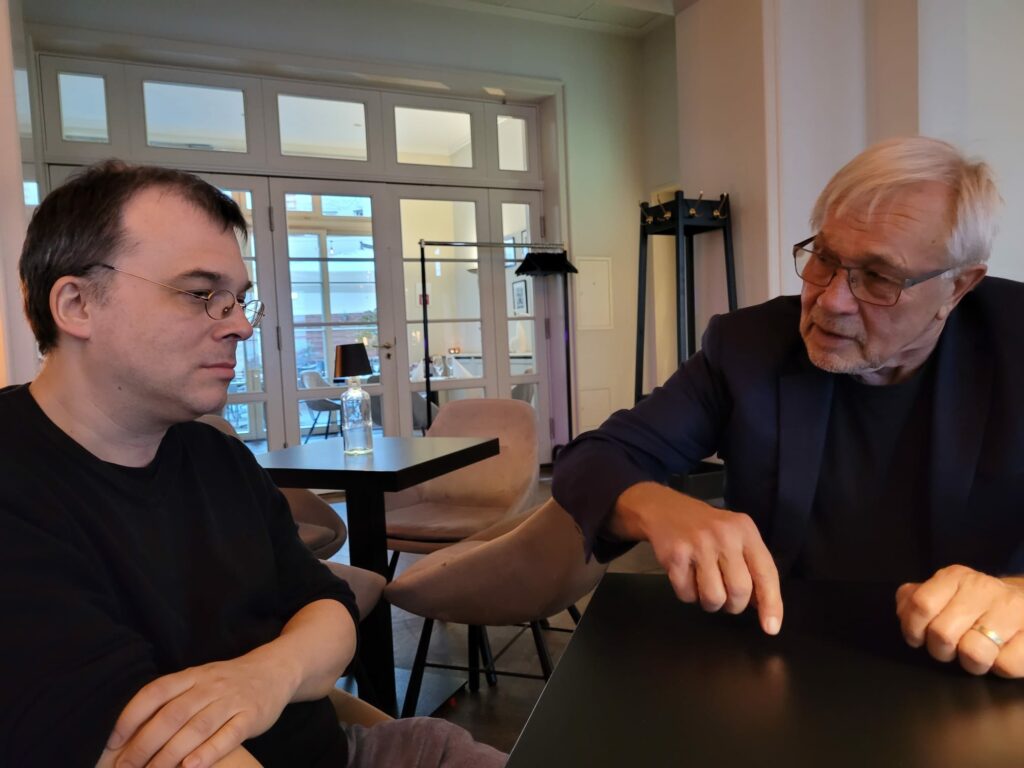
Conversations with Henning Trüper. Photo Angela Schenk Berlin April 2025.
BS: In 1945, the US stood out as the world’s supreme empire. The war efforts that defeated the axis powers weakened Britain and the other remaining empires. They could no longer keep their larger colonies. Formal decolonization began, which, interestingly, also included the US, which gave up their most populous colony, the Philippines. There remained one serious challenge to the US: the USSR, the communist Soviet Union. The US and the Soviet Union divided Europe into interest spheres at Yalta in February 1945, with Winston Churchill as the testator of the old world. The difference between the two empires was that the Soviet rulers argued that they ruled on behalf of the working class. Two industrial production and political rule systems emerged, legitimized by two strong ideologies: liberalism and socialism. The vision of world capitalism and democracy stood against the vision of socialism in one country, but with a global ambition. The conflict between the two superpowers, as they were called, had a strong military dimension with a distinct threat of nuclear weapons. In the decolonizing world, they flexed their muscles with conventional weapons in proxy wars and support of liberation movements or corrupt regimes or both[1]. The superpowers behaved like the extended arms of classical imperialism. I come to think of what you said in our previous conversation about Beutegemeinschaften, prey communities, which permeated Africa, Asia, and Latin America. They were public-private enterprises like the old pirate nests along the trade routes or mercenary soldiers who legitimized their activities with letters of marque issued by governments. The crises in Congo and Cuba around 1960, the Vietnam War, the coup against President Allende in Chile in 1973, and the independence struggle in Moçambique and Angola are just a few examples, which all dealt with the control of raw materials and other peoples’ territories. There was considerable continuity with the era of imperialism after 1870. The Cold War in the North was a series of hot wars in the South.
HT: Yes, I agree on the continuities. The Cold War would appear to have been a system in partial transformation imposing itself on the world order as it looked in 1945. I would say “system” because it appears uncommonly coordinated and integrated under, subordinated to, reacting to the technological, economic, and political needs of the arms race as it emerged after 1945. The race had different rhythms, over the coming decades, but never quite ceased. I think it is also important to understand this race as central even for matters of periodization. The term race connotes historical continuity. One thinks of the “scramble” for Africa, for instance, the slogan after the Berlin Congress in 1884, the frenzy to colonize everything that had so far been spared this kind of rule on the African continent, which points to the fact that the competitive structure has to do with the multiplicity of empires. The race for the atom bomb is one that the US initially ran against Nazi Germany, from the moment of the achievement of the fission of the atom in Germany in December 1938. The USSR joined some time during the war, as their spying activities within the Manhattan Project indicate. Counterintuitively, the Cold War is already ongoing during the entirety of the Second World War. It is perhaps because of this connection into the era of “total war” that subordination under the supremacy of the war machine came naturally to the Cold War period. In any case, the Cold War absorbed even political dynamics that had little to do with it, such as organized labor movements and the growth of the welfare state – both in the East and the West – and the political movement of democracy-building, of the expansion of popular participation in politics, also a matter that predated the Cold War. I also think it is important to keep in mind that it is not simply the market radicalism of neo-liberalism from the 1970s onward that has dramatically reduced the potential for the upgrading and the further spread of welfare states and in the underlying social mobilization and participation that had to some extent produced them; but rather that these forces were disarmed by their integration into the system of the Cold War, their recruitment for serving imperial-state powers in the big arms race. The welfare state is actually quite fascinating as a case of a maximized levée en masse, a mobilization of society for war, that does not rely on anything one might traditionally recognize as mobilization, but on forms that resemble a far-reaching demobilization of the populace. But it is a demobilization that ultimately appears to have taken place in the service of the state as war machine. Hard to get one’s head around.
BS: This total integration of the societies during World War II and the Cold War had an obvious political/ideological dimension, but it was not only a social integration under the motto of public welfare for mass support of the armament efforts. If I understand you correctly, you connect the mobilization of the masses to social discipline. One might also say disciplining of capital? I am struggling with the subsequent move as you outline it, the transition of social discipline and mass mobilization to a situation of demobilization and, by implication, slacking discipline, as I assume you would say. However, this move doesn’t happen only on the side of labor, the masses. The representatives of capital, too, abandoned the economic discipline imposed upon them. I agree that this deep shift is more than a matter of a new market radicalization, which is rather the legitimizing ideological instrument than the trigger. The Cold War was the factor that set parameters.
HT: I should stress that when I talked about subordination under the war machine I was referring to something that begins with a practical and symbolic subordination of political meanings under a novel signifier, the atomic bomb. All political discourse had to relate to this novel technology. It is a bit like the idea of the gold standard in relation to monetary value: a foundational symbolic unit that marks the supposedly incommensurate value that provides the boundary for the commensurate values of exchange. The atomic bomb has this function as the unsurpassable negative value, the potential destruction of all “higher” life on earth, and so on. Indirectly, this has repercussions throughout the entirety of the social order. For instance, it devalues the former value sphere of military destruction, on which social disciplining in the old model had depended. What emerges is almost something like an upside-down version of the previous social order. But it is still a social order. So paradoxically, disciplining transforms into the ostentatious loosening of discipline. All those liberations of the 1960s and 70s in the west, the changes in schooling, the loosening of disciplining at work connected to the welfare state and to the rise of consumer society, and also the lifting of conscription duties. And it would seem to me that one could find some parallel developments in the states of the Eastern Bloc as well, although the overall claim of the state to control over the lives of individuals was somewhat different there. But Kojève points this out in the famous footnote on the “post-histoire,” where he makes the provocative claim that there are no profound differences between the social orders (or disorders) of the US and the USSR[2].
BS: Oh, yes, Kojève is very relevant here. He was provocative in several ways. I remember his aphorism that Marx is God, and Ford is his prophet and his end-of-history argument a generation before Fukuyama, that history had ended with the French revolution and Napoleon, where he discerned the contours of a socialist capitalist rather than liberal capitalist final order.
HT: I think your observation on the capital side of things is very to the point: they, too, are released from the former discipline that meant subordinating all economic activity under the traditional war machine. But nonetheless, even the unfettered behavior that then emerges among the capitalists, namely “neoliberalism,” is still serviceable to the social order under the sign of the atom bomb, the power of which is expressed by its ability to turn the previous order on its head. I admit this is all a bit like Alice in Wonderland. But then, we all have a tendency not to admit to ourselves how far the world-making power of nuclear arms has reached and still reaches. So I think conventional notions about the way the Cold War and the welfare state are interrelated are quite probably mistaken.
BS: The Cold War as the upside-down of the previous social order, keep it through social discipline instead of destroying it. I like this phrasing. The term subordination concerning the atomic bomb or gold regarding money values, connote absolute values. It’s then interesting to note that both the nuclear bomb and, particularly, the gold became a bit less absolute in the 1970s. I think both were connected to the Cold War. The emancipation of the dollar from its gold commitment sped up the monetization process that we discussed in our first conversation with reference to Simmel. Gold ceased to provide the dollar’s value. The dollar became its own value. To return to Simmel’s terminology, the incommensurable tied to gold became commensurable and negotiable. The acceleration of monetization meant that the dollar became much more speculative and the speculations much more spectacular. This is perhaps the most lasting impact of the transition to financial capitalism. When the dollar became its own value, everything was fleeting. Whether it was over- or undervalued in the financial markets didn’t matter. The dollar remained the gauge and the master of the financial markets. However, it wasn’t incommensurable anymore. The US administration managed this process. Instead of a neoliberal emancipation, state and capitalism went hand in hand.
HT: The question of the role of gold is complicated and fascinating as it served, for the longest time, as a stand-in for the idea that all monetary value is grounded in a substance that has incommensurate value. Culturally, and even economically, even though the states have given up on the gold standard, the obsession with gold has not gone away, as the manic rise of the gold price over the last two decades indicates. The philosopher Jean-Joseph Goux, who was part of the younger generation of “French theory” in the 1960s, worked out a very astute way of understanding culture as dominated by different systems of value, all dominated by one such symbolic item that is given the role of stabilizing incommensurate value (libido/father, “drive”/phallus, social order/monarch, economy/gold, meaning/language) [3]. In the case of economy/gold – the approach is Marxist so Goux believes the real foundation of economic value is in labor – the question of the meaning of the dropping of the gold standard and the embrace of, basically, mere numbers in its stead, is up for grabs if one does not quite follow Marxist value theory. The interesting aspect would be to accept that the matrix Goux drafted changes historically, and that it integrates such items as the atom bomb, while also dumping elements occasionally, such as, arguably, monarchy, or the gold standard. The present-day return of gold as a major market where bullion serves as an imaginary last resort of private wealth is, of course, completely different from using gold as the guarantor of monetary value as such.
BS: I would guess that the costs for the nuclear arms race during the Cold War became so immense that the US government had to dump the gold standard for state-financial reasons. One remembers how de Gaulle in the 1960s spread doubts about the US capacity to redeem its gold promise. So to bring this back to historical concretion, after the retreat from the 1960-62 Congo-Berlin-Cuba abyss, it seems that the social discipline eased under the mass assumption of permanent affluence ahead in the growth economies, which triggered distribution conflicts. The three condensed crises in Congo, Berlin, and Cuba were, in retrospect, the culmination of the nuclear threat, which, through Cuba for the first time, spread to the South, breaking out from the Cold War stalemate in the North. The perspective of the South, too, with the missiles on Cuba, subordinated to the nuclear threats of the Cold War provoked reflection in a hectic decision situation jeopardizing to run out of control. John F Kennedy and Nikita Khrushchev agreed at the brink that it was not a good idea to deploy Soviet missiles in Cuba. The youth revolt called “1968” was a sideshow made possible by the retreat from the brink of Cuba.
HT: Very interesting, I had never thought about the western 60s as a response to the early 60s conjuncture of crises and the uneasy détente that then emerged. I suppose one could see Krushchev’s de-Stalinization as a similar process, leading to the Prague Spring, although this then went too far for the Soviet center of power to abide, unlike the 68 revolts in the west that were mostly absorbed into a perhaps more adaptive social and political order (with the exception of the radical wing that descended into terrorism and was suppressed). I guess one cannot stress enough the heuristic value of thinking about the history of the Cold War period “from war” …
BS: The loosening social discipline among the masses and the prospect of intensified distribution conflict made the representatives of capital, too, think of exit strategies from their political corset. Isn’t the underlying core issue a state-financial question: How much military power was necessary and how much welfare was possible and how should the costs and the yields of the economy be distributed? The two superpowers were, in terms of statehood, war machines of deterrence and simultaneously welfare suppliers for domestic legitimacy in the North, but catalysts of proxy warfare with conventional weapons in the South. One might on this point also consider the development aid packages to the South, as a distant functional analogue to welfare payments. These two military and social commitments became, taken together, too much for the state finances. The dollar collapsed in 1971, with a long pre-phase, and the Soviet Union fell twenty years later. The peace in 1945 didn’t mean disarmament but rearmament for the Cold War and its many proxy wars in the Third World. During the long build-up for the dollar collapse, the debate was whether the social welfare politics (Lyndon B. Johnson’s Great Society program) or the armament overburdened the budget. Here, one must add that the two expenditures were connected. The welfare states in the West were a psychological instrument against the enemy in the East.
The collapsing dollar in the 1970s and the fall of the Soviet empire twenty years later suggest a state-financial structural problem. The loosening social discipline among the masses and by capital was the expression of exit strategies when the nuclear threat slowly became experienced after 1962 in less traumatic forms and the iron grip of the 1950s released.
HT: But the question is still whether finances “collapsed” or were simply restructured – it seems to me that statehood is at least as great at adapting to economic needs as the economy is at adapting to statal needs. Both the 1970s crisis of the western center and the 1990s crisis of the eastern center might then be taken as challenges rather than breakdowns of continuity. My sense is that there has been a great eagerness, ever since the 1970s, to declare that the Cold War was over. This may just have been a long history of prematurity.
BS: I think the dropping of the gold standard in 1971-73 is exactly such a case of adjustment and restructuration, meaning that it was not the whole system that collapsed but only a particular part of it in order to save the core of it. Your critique of the conceptualization of the dollar crisis is very interesting since the state-capital political-economic system we are talking about reshuffled and reorganized its components rather than shifted from one system to another one. There is obviously a need for a deeper reflection on the conceptualization of what we are talking about.
HT: And I think taking this need into account might also change our perspective on the question about relations between statehood and “capitalist” economy in the west. There is, of course, a general sense in a lot of research on the history of especially post-1945 western welfare states that these systems were established in response to the Cold War, to the competition of political systems; and that, as you also described it in our first conversation, their dismantling began with the end of this competition. Regarding the argument about neoliberalism, that it was an expansion of private capital at the expense of state responsibilities, it looks like the political-military-technological confrontation of the Cold War constrained capitalism, and the end of the confrontation unfettered it. So, the enormous post-1945 transformation would have been one of the state from a war machine to a welfare supplier.
However, this would be a tremendous simplification since the earlier welfare institutions might also be seen as functions of the war machine, bio-politics as ultimately about the population as a military resource. Moreover, the nexus of demilitarization and the welfare state is a European one and quite clearly owed to the US’s relative monopolization of Western military power (and, arguably, the USSR’s monopolization of military power in the Eastern Bloc). So, in this regard, too, history is more complicated, and the more primitively functionalist versions of the neoliberalism argument seem to miss this aspect, which is one of the transformations of the empire after the seeming end of the empire in the 1950s and 60s. I think this is a vital problem for understanding statehood in contemporary history.
BS: Is your point that the decisive change, the ‘’real’ change, after the dollar crisis was not the shift towards neoliberalism? Would you see it as an ideological legitimization of what was happening? The tectonic plates were empires and imperialism moving on the shifting conditions of the Cold War. The connection between warfare and welfare, as the main substance of statehood, and between private and public shifted when the Cold War somewhat eased after Congo-Berlin-Cuba.
If so, I have a question about the disciplining agent, the state and its imperial enclosure. The two dimensions of power that held the world in terrible suspense in the North and pursued proxy warfare with conventional weapons in the South were state and empire. The question is what the statehood of the two superpowers meant. What was Europe, the old empires, in this development? Were they just annexes to the superpowers and their spheres of interest? I am not so sure. In negotiating the European integration project in the 1950s, Eurafrica was proposed [4]. Another interesting case is the establishment of what became G7 in 1975. The French president Giscard d’Estaing called leaders from Germany, Italy, Japan, the UK, and the USA (Canada joined the club the following year) to a meeting in Rambouillet southwest of Paris to discuss a plan about a new European Economic Order he had elaborated with the German chancellor Helmut Schmidt against the backdrop of the recent dollar collapse, by implication independent from the dollar. Henry Kissinger objected strongly. The threatening Western split was healed when the stalemate situation was led over in a discussion of the second big problem of the time, the oil price shock and the attempt by the Third World unified as the G77 to use the oil as a case for other raw materials and their claim for a New International Economic Order. There emerged soon at the Rambouillet meeting full agreement on confronting the NIEO. G7 was established to confront the G77 and their NIEO claim. The confrontation of the G77 bridged the Transatlantic dispute on a new monetary order after the dollar collapse. The old empires supported the new when it was weakened, subordinating themselves to the continued power of the dollar even after it had ceased to represent incommensurable value.
HT: What is tricky to conceptualize is, I think, that the systemic character of the Cold War meant that it integrated patterns both of imperial and of national politics. This happened not only in the two superior empires but in Europe as well. Both blocks in Europe were dominated by the quasi-imperial centers. Both of these centers pretended, in different ways, that they were actually overcoming imperialism in the older European vein (which they also, in some regards, did); and both blocks were ultimately simultaneously shaped by nation states and their political peculiarities. Even with some hindsight, such as we have now, one tends to just see one side of this history. So the Eurafrica plans you mentioned – can one see these as more than an attempt of, probably, France, in particular, to keep their remaining imperial structure going under the new conditions, thus a problem of national politics that happened to be imperial at the same time? Many of the European empires have retained some of their possessions, and they probably did so because the Cold War conditions allowed them to uphold their power in some places. The case of Greenland, which is now in the news so much, would probably be quite interesting to look at from this perspective, because from what I understand, it is a common trope that it is precisely the welfare state, which flourished under Cold War conditions, that has kept the Greenlanders – along with the difficult economic conditions of the island – Danish. Presumably, the US government’s verbal aggression against Denmark and Greenland right now also has to do with their wider aggression against welfare state institutions. Similarly, the demilitarization of Europe, now so much deplored in the press, is a systemic feature of the Cold War. The system of this conflict could not fully render the economies of nation states serviceable to the needs of the imperial centers. At the same time the centers could not tolerate full-fledged military technological competition with the subordinate nation states. France and Britain, China, then Israel were all “allowed” to develop nuclear arms, China having emancipated itself quickly from the Soviet Union’s hegemony in the socialist portion of the world. And over time China appears to have become, or is still in the process of becoming, a real competitor. The underlying principle of competition is not one of capitalism; it is one of war. I think the real reason that neither the US nor the USSR were able to win any of the hot wars they fought during the Cold War is that these were not competitive, but asymmetrical. From a techno-philosophical point of view – or maybe just a Clausewitzian one – they were profoundly pointless because they did not contain the potential of technological escalation from both sides. Paradoxically, since one side could not win, neither could the other.
BS: I would like to come back to what we just talked about, that the neoliberal argument for state withdrawal and private capital expansion into the welfare arrangements only provided the ideological motivation of deeper changes of the Cold War structures. I think that this argument is important to highlight. Yes, the welfare state constrained capitalism in the North but much less so in the South, where the empire continued in the old pre-nuclear forms And, of course, there was no welfare to privatize, only raw materials to extract. As to the unfettering in the North after 1990, I thought here of the hordes of economic consultants from the West invading the fallen empire, arguing that the market would do the job and that what remained of the state economy needed to be privatized. Although more radical, this development was the same as in the West after the dollar collapse in response to the 1970s crisis. The neoliberal perspective broke through in the 1980s. The privatization of considerable parts of the welfare provision had a mitigating impact on the state finances, which were still under Cold War pressures. Although welfare after 1990 declined as an ideological argument in the competition between the two empires about the best social model and became an instrument for private profit, the support of proxy wars in the South continued with conventional weapons. Both the US and Russia have been rather constantly at proxy warfare somewhere or other since the 1990s. The Islamic State was a big challenge to them after the Cold War. The market replaced the state as a heuristic point of reference, but the Cold War’s main ingredients, the entangled war and welfare, continued in new forms with terrorism and responses to terrorism as a crucial dimension of violence. It is worth remembering that a few years after Francis Fukuyama published The End of History, Samuel Huntington replied with his book about the clash of civilizations [5]. The political-economic nexus shifted context under considerable continuity. But what does the shift of key concept in the political debate from state to market mean? What was the state? What was empire? How much did it change?
HT: The neoliberalism argument tends to overlook what Eisenhower, in his parting address, labelled the “military-industrial complex.” In particular, the military side of the complex is often sidelined, as perhaps merely one type of business the state cannot pull out from, yet of no central consequence for relations between the neoliberal state and the capitalist economy, in spite of the large sums of money it consumes. Military technology as a driver of innovation has been overshadowed, in recent decades, by the attention given to computing, social networks, communication technologies and the like, all of which have been successful at presenting themselves as civil in nature. But there is a military core to all this activity that becomes clear if one looks at current developments in drone technology and artificial intelligence: None of this will be successfully regulated, for instance, because all of it is ultimately part of an arms race. This race is mutually useful, as it enhances (and protects) the agency of the state, while it maximizes the profits of the profiteers. It seems almost a diversion tactic to focus only on the “liberalization” of business from state regulation while not addressing the question of how the state might be profiting. Morally speaking, it tends to be hard to see the state because it is an abstract agent; but maybe the point should not primarily be a moral one.
BS: Yes, both the capital interests and the state profit because it is a win-win tangle. In the North, the military-industrial complex continued, and through the conventional proxy warfare in the former colonies, imperialism continued. There was an argument about neocolonialism with Kwame Nkrumah’s opening salvo in 1965 [6]. Decolonization was neocolonialism. The North did not develop the South with development aid. According to that argument, the South contributed to the economic growth of the North through unequal terms of trade. And, of course, capital never abandons profitable relationships with the state. The dismantling of state functions after 1990 dealt mainly with the finance industry’s interests.
HT: The critique of neoliberalism, at least in certain variants, goes rather easy on the state and then ends up seeing it as the only solution. Now, there is even talk of how a “war economy” approach might be needed to save us from the abyss of climate collapse and usher in some kind of degrowth economy – without taking into account how we may have been living in war economies all along and how these economies are maybe rather the root cause than the solution. The critique of neoliberalism, when it avoids also offering a critique of contemporary statehood, is itself rooted in the Cold War period and what happened with the state in that time period, which shifted some of the basic understandings of politics, for instance with the way in which the democratic order can contain, and absorb, critical theorizing.
BS: Continuing and absorbing critical theorizing is an important argument. I think that this Cold War practice connects to what you just said about subordinating under the Cold War machine and social discipline. Yes, the transformation of empire rather than capital against the state. The transformation of the empire from military support of the empire in the colonies to Cold War nuclear deterrence was mainly a transformation in the North. In the South, the military component supporting the empire continued to bridge the rupture that decolonialism was argued to bring, as we have already emphasized.
HT: … and the transformation of empire has a military side to it. The monopolization of cutting edge military technology in the quasi-imperial centers had the downside of a proliferation of lower-grade military technology. This was sold off to places that were not subject to the military technology monopolization concern, a trade that sustained the business side of arms production. This has of course often been criticized. The state-capitalist model of arms manufacturing in the Soviet Union and the emblematic global career of the Kalashnikov should warn against any easy limitation of this critique against the private-business capitalist model of the West, however: It was a Cold War thing, not a private business capitalism thing per se. And since it has not ceased, it stands to reason that a lot of the conflict actually remains in place and is far from over. As a result, while the previous manifestations of Empire in the south had been about establishing at least the appearance of order, this pretense fell away, as the dominant form of imperial power in many parts of the world became open complicity with warlords and dictators in the interest of the low-grade arms business, the extraction of raw materials, and proxy relations in more or less pronounced forms of warfare.
BS: After the Cold War had culminated in the early 1960s with the Congo, Berlin and Cuba crises, and the Kennedy brothers and Khrushchev stopped their chicken game about the Cuban missiles, the nuclear nightmare of Stalin’s night that terrified Europe slowly released its grip and the social discipline it had imposed.
HT: The great historical irony of the Cold War would appear to be that while it created an unprecedented political, social, and cultural dominance of military technology, it went along with a profound de-disciplining of societies on both sides of the confrontation, if in different ways. So, the question for the present would then be whether, and if so, why this system appears to be collapsing, or at least to be undergoing yet another profound transformation. The confrontation of the great powers of the Cold War, which seemingly replaced the older empires, was dominated by the arms race as an unprecedented expansion of technology; and the technological system with its peculiar needs came to exercise a new quality of dominance over political power. This dominance ultimately rested in the technological capacity of destroying all human (perhaps even all “higher”) life on earth. The welfare state of this period arguably replaced earlier military-serving forms of social discipline by quietening people and reducing their presence and unpredictability in the political process. It has seemed to me for some time that the political systems have nonetheless tirelessly worked to get out from the dominance of mutually assured destruction, MAD, and have succeeded to the extent that conventional warfare between the former superpowers has become conceivable again. Although a lot of people clamor about the possibility of World War III as the old Cold War scenario, the political process is precisely one of liberating statehood from the constraints of MAD, which made it impossible for the nuclear powers to enter into military confrontations with each other except by proxy. In a sense, the discipline of de-disciplining worked as a split system. While society at large, including many of the elites, were prompted to shed forms of social discipline, the military and political systems became more disciplined by the Cold War setting. It would be another irony that this distribution of labor is collapsing and the de-disciplining is leaping over into the war machine functions of the state.
BS: Which would no doubt reinforce the practices of “classical” pre-1945 imperialism?
HT: Admittedly, the results look like a return to older forms, or like a hybrid of Cold War and older imperialist policies. Proxy war is still the method of choice, but now it is more of a political tool than a necessity, where it seems pretty clear that a limited military confrontation of the US and Russia or the US and China with “conventional” weaponry is conceivable without nuclear arms playing much of a role. There are still some of the older constraints left, and perhaps that is not going to disappear, so there would be a lasting legacy of the Cold War, after all. In any case, if this view of things were correct it would then seem kind of logical that the “new” forms that emerge from this process appear to be revenants of older forms, with Hitler salutes thrown around for show, and tank battles fought on World War II battlefields for, it seems, some kind of perverse military nostalgia. But in Ukraine, novel forms of warfare also seem to be rapidly developing.
War seems to be in a fairly chaotic situation, an assemblage of different layers of time, perhaps, to use Koselleck’s term. If one were to address this development in a historical perspective, probably the so-called “war on terror” from 2001 onward would be a crucial thing. U.S. military engagements in the 1990s had been framed as humanitarian interventions of sorts, inserted into a progressive understanding of this being the only possible future of war. The advent of terrorism as an adversary was a way out of tying this understanding of future war to a humanitarian template. The sheer word, “terrorism,” was enormously enabling, and its awful career over the last two decades – all the authoritarian regimes, and many of the nominally democratic ones as well, now indiscriminately labeling whomever they wish to victimize as “terrorists” – is an entirely redundant object lesson in the enduring power of propagandistic language. The “war on terror” was many other things than what it proclaimed to be, under the cover of the propagandistic label. The Iraq War was a weird crossover of extractionist imperialism and hyper-interventionism, becoming embroiled in a horrifying civil war, spreading over even to Syria later on, that actually generated way more terrorist activity than had existed prior to 2001. The politics of this war are anachronistic on so many levels that they seem impossible to sort out. I have the impression that all of this is the liberation of the system of war from its more rigid constraints in the Cold War period. The US, having started those wars, were unable to win them. But war itself has won. This win set the stage for leaving behind, as far as one could, the technological order created around nuclear weapons. But since it is not possible to really move beyond this older system of weaponry, the further development of war will be one of heightened technological anachronism. It will not be like the mostly ornamental anachronism of swords and sabers in the period of the World Wars (excepting the Japanese, who used swords an awful lot still at the time).
BS: It thus looks like a kind of wild west defying rules and norms, in the wake of the declining and dissolving Cold War discipline. The recurrence of a new-old imperialist standard. Thank you very much for this very stimulating discussion of how to see the Cold War and the connection between warfare and welfare, private and public, in new ways, casting new historical light on our world situation. In our next and concluding conversation, I would very much like to talk about the possibility of a new rule-based order not imposed by the threat of planetary extinction. Or is the empire just another self-propelling machine, although more complex than the Market? The brink of catastrophe seems still to be there, although maybe more so in the form of the climate threat. What options are there to get away from it in ordered form requiring some kind of social discipline, but as opposed to a nuclear threat of extinction, through a meta-normative order guiding the development in new directions? Where is the capacity of human agency in constructive rather than destructive respect? Or will empire and imperialism remain the destiny of humankind, only shifting color like a chameleon?
[1] Odd Arne Westad, The Global Cold War. Cambridge: Cambridge University Press 2005.
[2] Alexandre Kojève, Introduction à la lecture de Hegel [2nd edn. 1962] (Paris: Gallimard, 1997), 434–437.
[3] Jean-Joseph Goux, “Numismatics: An Essay in Theoretical Numismatics,” in Symbolic Economies: After Marx and Freud, Ithaca: Cornell University Press, 1990, 9-63.
[4] Peo Hansen and Stefan Jonsson, Eurafrica. The Untold History of European Integration and Colonialism. London: Bloomsbury 2015.
[5] Francis Fukuyama, The End of History and the Last Man. New York: Free Press, 1992; Samuel Huntington, The Clash of Civilizations and the Remaking of the World. New York: Simon & Schuster, 1996.
[6] Kwame Nkrumah, Neocolonialism. The Last Stage of Imperialism. London: Palaf 1965.
How to quote:
Cit. Bo Stråth, “Conceptualizing Capitalism: Conversations with Henning Trüper. Blog 3. The Cold War and the Hot Wars ‒ Welfare and Social Discipline” Blog. https://www.bostrath.com/planetary-perspectives/blog-3-the-cold-war-and-the-hot-wars-welfare-and-social-discipline/ Published 30.05.2025
Comments
Please submit your comments with the Contact Form or send an Email to bo.strath@gmail.com.
